Emergency Radio Frequencies Every Prepared Family Knows [FREE DOWNLOAD – Tips for Passing the Ham Radio Exam]
Amateur Radio, Emergency Communication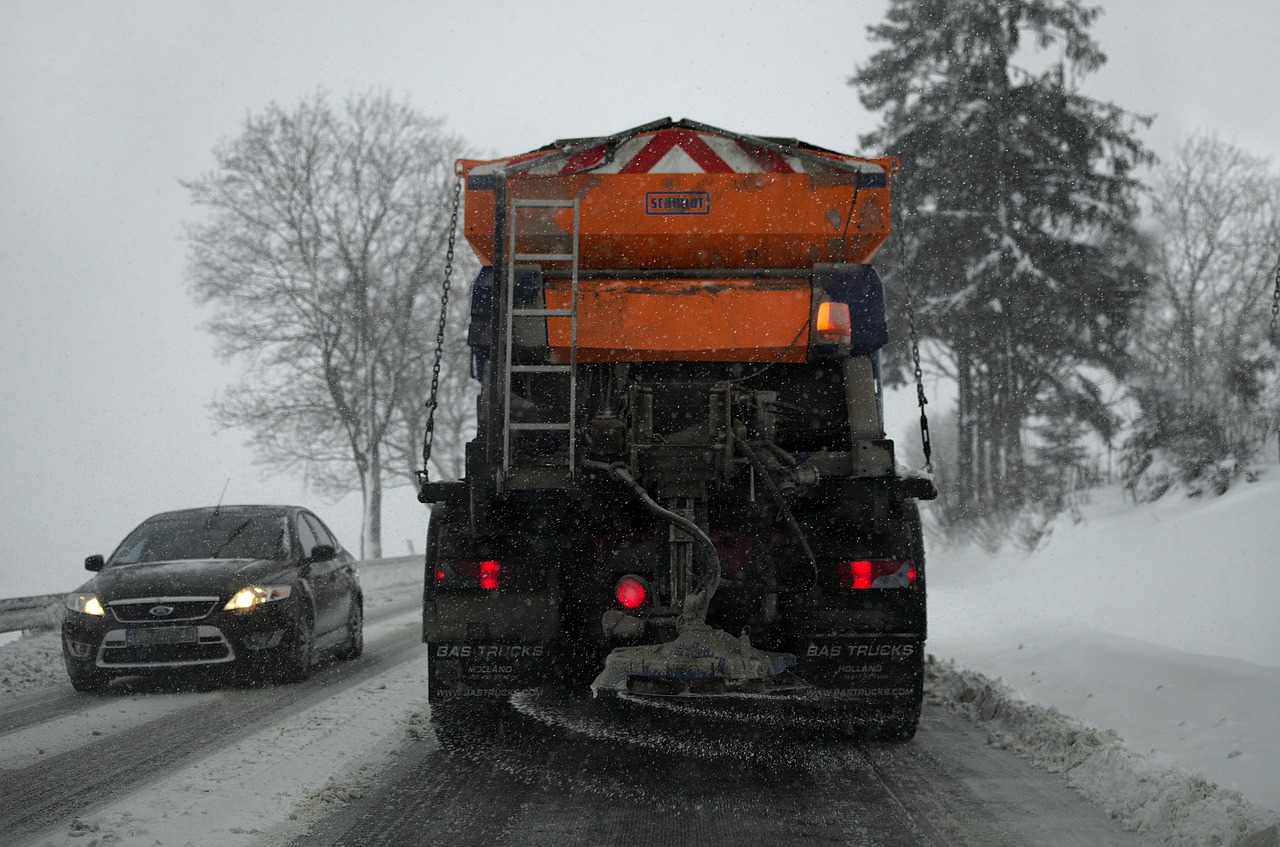
Your cell phone is your best option to calling for help in an emergency. But what if your cell phone isn’t working? Your battery might be dead or there might be a wide-spread infrastructure failure. In a worst-case scenario, it doesn’t really matter. All that matters is that you need to get information in, information out, or both and that little glowy box is now an expensive paper weight. We’re about to look at radio frequencies every well-prepared family knows for getting and giving help when it’s needed most.

On a dark, rigidly cold December evening Cody and Tina Fowler, along with their sons, Jacob and Timmy, were on the last leg of their journey home when Cody realized that a vehicle that had been following them was no longer there on U.S. route 50 in rural Colorado. Cody turned around and drove back down the icy road to check to see if everything was alright. As he approached the last place the following headlights were visible he discovered a red SUV in the ditch. Bracing themselves against the sub-zero temperatures the five occupants of the SUV had crawled back to the road. Cody immediately recognized that some of them had severe injuries.
Because the Fowler’s family cell phones were brand new and hadn’t been activated, Cody reached for his ham radio. Amanda Alden, a ham radio operator, answered Cody’s call for help and immediately called 911, relaying the location of the accident to the Colorado State Police who immediately dispatched a unit along with the Deer Mountain Fire and Rescue, and the Fremont County Sheriff.
The end of the story? Everything ended well for everyone involved. But think how much worse it could have been if Cody didn’t know how to use an old-school form of radio technology when the more modern form of radio (yes, cell phones use radio waves) wasn’t available.
Knowing How to Ask for Help is Half of the Battle
The average radio signal is roughly 10,000 Hertz wide. The usable radio frequency spectrum ranges from 1,000 or so Hertz (think AM radio) to more than 1,000,000,000 Hertz (just above most cell phone frequencies). That averages out to nearly 10 million channels to choose from when you need information or help. Sure enough, those numbers aren’t exact because not every channel is used, nor is every channel is 10KHz wide, and not every radio accesses every frequency. But still, that’s information overload by any standard.
So, how does the well-prepared family know which frequencies to use in a disaster that destroys the infrastructure? The good news is that there aren’t that many frequencies with valuable information. The less than good news is that knowing those few can seem mysterious.
Some frequencies are helpful in receiving information such as weather, news, infrastructure status, warnings of civil unrest, and recovery efforts. Other frequencies are useful for two-way communication to coordinate efforts, maintain safety and security, or just keep in-touch. Some frequencies transmit over short distances of a mile or two. Others can reach hundreds of miles or around the globe. It can be overwhelming, especially in the stress of a regional or national disaster or crisis. Fear not, we’re going to break it down into manageable chunks for you. We’ll also share which radios can access which frequencies, and how to use those radios, and, in the case of ham radio, the process for earning your ham radio license.
Emergency Radio Frequencies – Commercial Radio
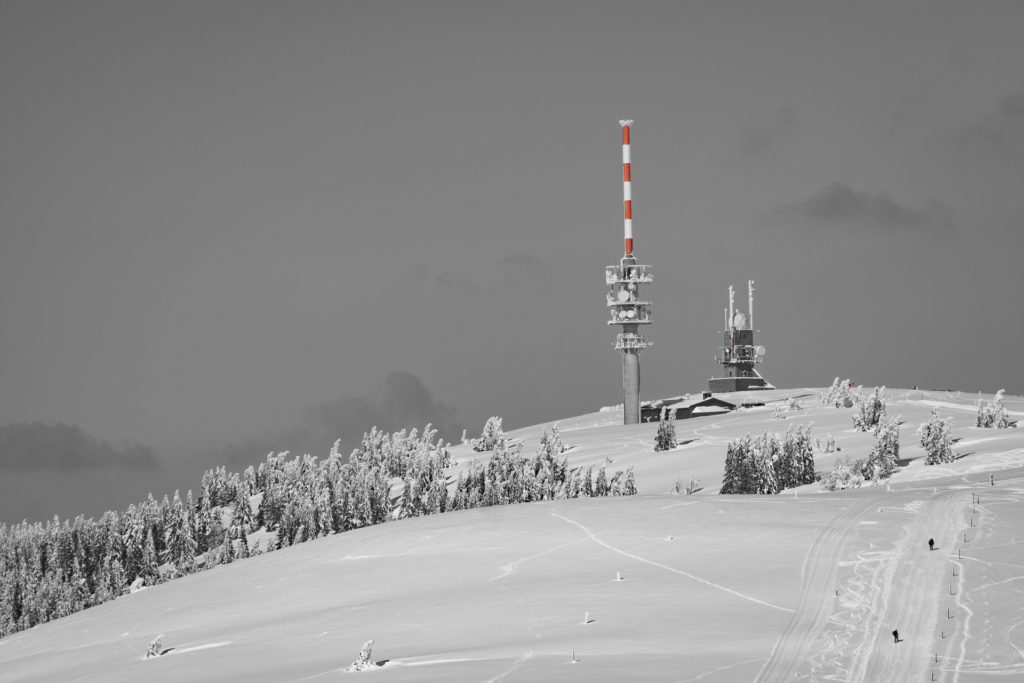
It’s amazing how encouraging it is to learn that we’re not alone; to know that other people are going through the same things that we are. In a disaster scenario, this might be hearing news reports that certain areas are already experiencing power restoration and that our area is next. Or it’s good to hear a weather report of fair weather for several days after a hurricane just devastated your Other times we need actionable information such as when the weather might be takin a turn toward severe or where riots are breaking out so that we can avoid or evacuate. This type of information is usually valuable to a wide segment of the population and doesn’t need discussion between the source and recipient, “The National Weather Service has issued tornado warnings for the following communities…” This is one-way or broadcast communication; from one source to many.
This is the least complicated means of using radio communication. Back in the day the Emergency Broadcast System (EBS) would break into radio or TV programming to notify residents of imminent weather or other wide-spread danger (actually, the EBS still exists, but in a revised national form called the EAS or Emergency Alert System). Today many municipalities and counties use the Wireless Alert System (https://www.ready.gov/alerts) that broadcast a cell phone text alert. Check with your local government to learn how to receive these alerts.
In the aftermath of a regional disaster valuable information will be transmitted from just about every AM radio station in the area. The most basic thing to do is get in your car and listen to the radio. Some local stations will specifically adjust their format to transmit disaster related news, but talk news radio stations will be the best bet.
In a really bad day scenario there are Primary Entry Point (PEP) radio stations that provide information directly from government officials. PEP stations are battle-hardened with generators capable of 30-day operation. Here’s a map with their location, call sign, and frequency http://allhazards.net/resources/Documents/Library/PEP%20Map.pdf. All of these radio stations operate at frequencies accessible by any AM/FM radio.
Emergency Radio Frequencies – National Weather Service/NOAA
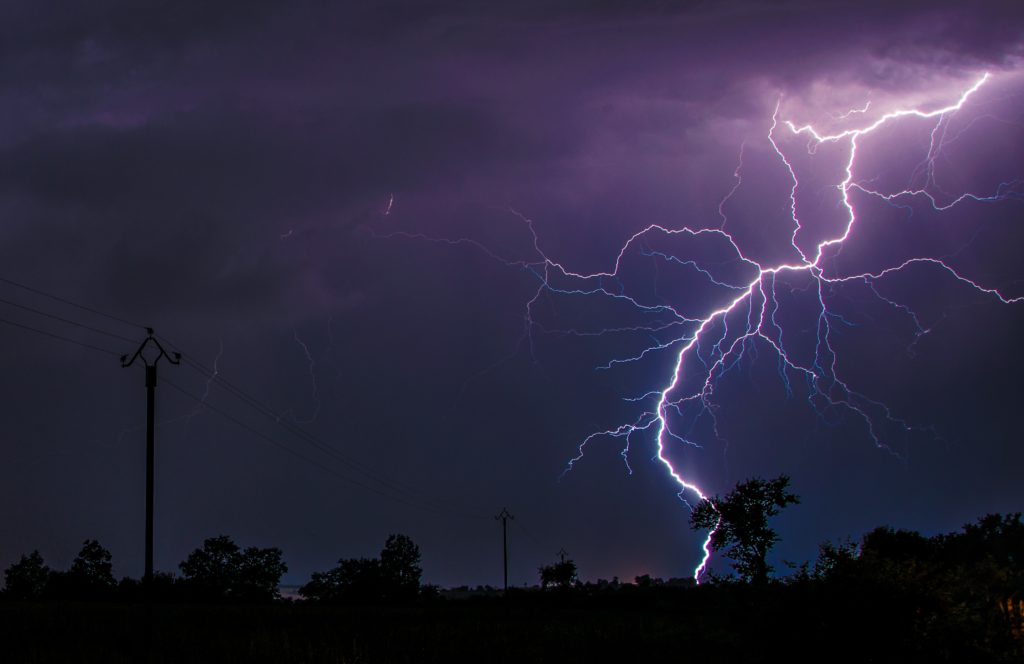
When most people think of emergency radio they think of a radio that squawks like an injured goose that swallowed a kazoo followed by a stilted, mechanical voice reading a list of counties that are about to be annihilated by inclement weather. That radio broadcast is coming from one of hundreds of National Oceanic and Atmospheric Administration National Weather Service offices scattered across the U.S. What many people don’t realize is that Iron Mike (that’s the nickname of the voice) recites weather information pretty much 24/7 from each of those NOAA/NWS offices. When I deploy to our local NWS office I sit right next to Mike. He’s a short, squatty fellow and rather square. He doesn’t say much in the office, but his voice is quite booming outside.
Mike’s voice can’t be heard on a conventional car radio, though some models (in particular Subaru) offer weather radio as an option. Traditional AM/FM radios receive transmissions in the 1KHz (one kilo-Hertz) range for AM and 1 MHz (one million-Hertz) range for FM. NOAA weather radio frequencies are in the 150 MHz range. There are seven total frequencies and no two adjacent areas use the same frequency to avoid interference.
The easiest way to receive transmissions from NOAA Radio’s Iron Mike is with a NOAA Emergency Alert Radio. Most of these radios automatically scan for the appropriate frequency in your area and will remain silent until a sub-audible frequency triggers an audible alert tone (goose with the kazoo) followed by the melodious strains of Iron Mike reading the pertinent alert information.
We suggest the Midland ER210 Emergency Crank Weather Radio. It receives AM, FM, and NOAA/NWS signals. The battery can be recharged via USB, dynamo (crank), or solar. Don’t depend on the solar, though. It’s not that the solar is bad on this unit, small footprint solar panels are always an “iffy” proposition. One minute of crank provides about ten minutes of listening. The flashlight and USB power out features are nice to have, just in case.
If you have a radio or scanner that can receive VHF Public Service frequencies, here are the seven NOAA/NWS frequencies for manual input: 162.400 MHz, 162.425 MHz, 162.450 MHz, 162.475 MHz, 162.500 MHz, 162.525 MHz, and 162.550 MHz.
Here’s a link to the NOAA Radio page https://www.weather.gov/nwr/
There are also some helpful frequencies for those of you that can receive high frequency broadcasts.
NOAA transmits marine weather information from the US Coast Guard. These include both voice broadcasts and radio fax. Using an HF receiver and computer software such as FL DIGI (http://www.w1hkj.com/) you can view and print weather maps and satellite images captured from radio signals. Full explanation of how to do this is outside the purpose of this post, but we’ll share instructions in a future post and video. For those who are already familiar with receiving HF digital radio signals, here’s a link to a .pdf listing the worldwide radio fax broadcast schedule. https://www.weather.gov/media/marine/rfax.pdf
This is a weather satellite image that I captured with my ham radio.
Two-way Emergency Radio Frequencies – CB
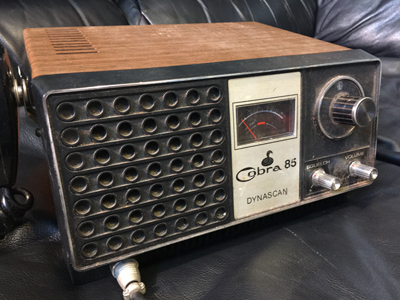
“Breaker, breaker, good buddy. Keep the shiny side up and the rubber side down. Look out for Smokey.”
In the 1970s CB, or citizen band, radios were all the rage. Using frequencies originally allocated for ham radio everyone could now use two-way radio. Compared to ham radios, CB radios are limited in distance, 3-20 miles depending on line of sight and propagation conditions.
Because a license isn’t required and of their relatively low cost CBs are still popular for many people and available to the masses. But to put it politely, the language on many CB frequencies (or channels) is colorful or NSFW, unless your work is in the cab of an eighteen-wheeler.
However, channel 9 is still recognized as an emergency frequency. REACT (Radio Emergency Associated Communications Team) and state and local police still monitor in some areas. In an emergency, you might find help by saying “EMERGENCY, EMERGENCY, EMERGENCY” on channel 9. Also, the most active CB channel is 19, especially when travelling on or near an interstate highway, but getting a word in edge wise on 19 can be near impossible.
Channel 9 = 27.065 MHz
Channel 19 = 27.185 MHz
There’s a subset of CB radio called “FREEBANDING,” which uses modified radios to operate on frequencies just above or below the “real” Citizens Band. Because of its specialized nature, Freebanding is outside the scope of this post, but more information can be found at https://radiofreeq.wordpress.com/2013/07/01/survivalist-ssb-cb-freeband-channel-frequency-list/
Two-way Emergency Radio Frequencies – FRS/GMRS/MURS

Family Radio Service, General Mobile Radio Service, and Multi-Use Radio Service radios can all be very handy for short distance two-way radio communication in a survival or disaster situation. They’re easy to use, channelized (no complicated frequencies to understand), and operate in the VHF/UHF spectrum. There aren’t any channels that are monitored specifically for disaster or emergency messages, but it’s worth a shot to call out on the MURS frequencies.
151.820 MHz (This is the frequency most commonly used.)
151.880 MHz (This is a common repeater frequency. Repeaters extend the range of a radio.)
151.940 MHz (Unofficial emergency frequency commonly used by preppers.)
154.570 MHz (Shared with business radio.)
154.600 MHz (Shared with business radio.)
Two-way Radio Emergency Frequencies – Ham Radio (VHF/UHF)
Amateur radio is a treasure trove of emergency and disaster frequencies. The upside is that, just like all frequencies, a license isn’t necessary to listen on ham radio frequencies. The downside is that a license is necessary to transmit on ham radio frequencies (there is an exception to this no transmit rule, but we’ll get to that later).
Disaster communication on ham radio VHF/UHF frequencies varies from location to location, county to county, even city to city. Many of the frequencies can be found in the RadioReference.com frequency database. More accurate frequency information can be found through an amateur radio service in your area. A Google search for ARES (Amateur Radio Emergency Service) or RACES (Radio Amateur Emergency Service) or AUXCOMM or Skwyarn “near me” should reveal a webpage with frequency and contact information for a group in your area. Here’s the link for the local ARES group in Clay County, FL where I live. Most groups will list their frequency information on the homepage just like we do on the left of our page.
Keep in mind that these are volunteers, so the information isn’t always “official” communication, but monitoring what they’re saying can provide information as to conditions in your area. Whenever our county shelters activate for a hurricane Clay County ARES deploys amateur radio operators to the shelters and to the county Emergency Operations Center. The messages relayed between those locations range from shelter conditions, weather reports, road conditions, power outages, etc. All of that can be valuable
On a personal note, I strongly encourage you to earn an amateur radio license. No, I implore you…I urge you. I’ve witnessed far too many people think that they can buy an inexpensive Chinese walkie-talkie and use it in a really “bad-day scenario.” Amateur radio takes practice. What worked yesterday, might not work today, and there’s a lesser chance that it will work that way tomorrow. Yes, I offer a course. Yes, I know that this seems like a shameless plug. But I hope that we’ve built up enough trust for you to know that I don’t care how you get your license, just get it. Your chances of success with communicating in a disaster increase ten-fold with the experience that a license provides.
Yes, it’s true that after a wide scale disaster the FCC isn’t going to worry about who has a license and who doesn’t. But ham radio isn’t “plug-and-play.” If it was that easy it wouldn’t be such a popular and fulfilling hobby. It takes practice. Buying a radio, preprogramming the frequencies, and then leaving it on the shelf, then pulling it out after SHTF just isn’t going to work for myriad of reasons that I’ll cover in another blog post.
In the meantime, when you find that information for the local ARES, RACES, etc. group, get in touch with them. Join them. You don’t need a license to join them. In fact, they’ll help you get your license. Participate with them. That’s your best chance at success with two-way radio after a disaster.
146.520 MHz is called the ham radio 2 meter national calling frequency. It’s not a dedicated emergency or distress frequency, but this is a widely-monitored frequency.
Two-way Emergency Radio Frequencies – Ham Radio (HF)
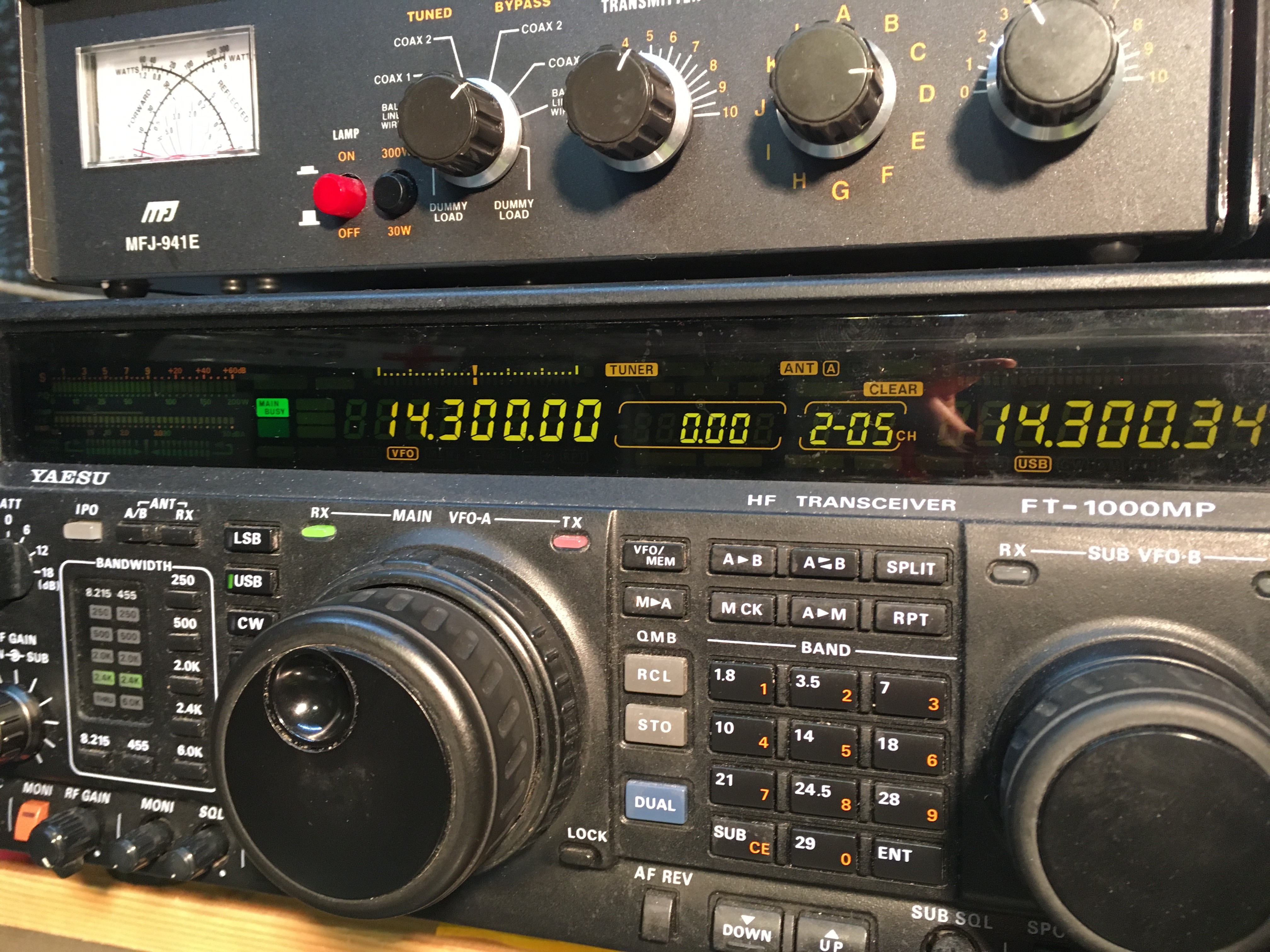
HF (high frequency) emergency frequencies are where you can listen to hurricane reports from the Carolina coasts or the status of infrastructure from Alaska after an earthquake or distressed sailing vessels in the Gulf of Mexico request assistance. Some people equate HF with shortwave and in many cases they can be used interchangeably.
There are three primary high frequency ranges or radio bands that ham radio operators use in emergencies or disasters. One is the 3 MHz or 80 meter band, another is the 7 MHz or 40 meter band and the other is the 14 MHz or 20 meter band. There are regional frequencies in the 40 meter band that are used to transmit and receive signals within 1000 miles of the area impacted. These frequencies vary from region to region, state to state, and sometimes intra-state. For instance, here in Florida there are frequencies used in north Florida which are different than the frequencies used in central Florida which are different from the frequencies used in south Florida. Transmitting on these frequencies require an amateur radio license and substantial radios and antennas. As to the license part, remember that if NO other means of communication are available when there is imminent threat to property or life, anyone can transmit on any frequency. The radio and antenna part are more problematic.
Transmitting effectively on high frequencies usually requires a radio that costs in the hundreds of dollars (at a minimum) and an antenna one half of the band’s wavelength. That means that an antenna for the 3 MHz or 80 meter band will be 40 meters long. That’s pretty near half of a football field. 40 meter band transmissions use an antenna 20 meters long. Even a transmission on 20 meters needs 10 meters of antenna. (There are quarter wave antennas, but they tend to be more troublesome to use in an emergency and less effective.)
The good news is that receiving HF signals isn’t difficult at all. A nice low priced shortwave radio like the C.Crane Skywave SSB is a great for less than $175. The Skywave SSB can receive AM/FM broadcast along with shortwave and the ham bands. The bonus is that it has weather alert and aviation VHF, too. One of my favorite parts about the Skywave SSB is that it comes with an extra wire antenna that improves reception.
Here’s a great resource to find the 80 and 40 meter emergency ham frequencies in your state or region. http://radio-relay.org/wp-content/uploads/2020/08/TrafficNets.pdf Look for nets in your state and with the words TRAFFIC, ARES, or SKYWARN in the name. Any that have CW in the name are for Morse code, so unless you know Morse code these won’t be of much use. DIGITAL require a computer and decoding software, don’t worry about these (but there will be a future post about how to access this information.) Also, ignore any frequencies that start with a number
There are some settings on the radio you’ll need to set. First, on any amateur frequency that starts with a number 7 or lower the LSB or lower side band setting needs to be used. Some radios will do this automatically. Also, if the radio has a filter, then it should be set to around 3KHz or MID. It may take some experimentation.
Here’s a list of 7 MHz frequencies that are common gathering places for amateur radio operators. These are called “travel and information nets.” There’s a good chance that there will be valuable information about regional disasters and emergencies discussed on these nets. Of course, you can call for help on these frequencies because there’s almost always someone there.
RV Service Net
Eastern & Central North America 7.191 MHz 7:00-9:00AM Eastern
Rocky Mountains 7.184 MHz 6:30-8:00 Mountain Time
Pacific Coast 7.2685 MHz 9:00-10:00 Pacific Time
East Coast Amateur Radio Service – 7.255 MHz
South Coast Amateur Radio Service – 7.251 MHz
Midwest Amateur Radio Service – 7.258 MHz
There are two specific frequencies on the 20 meter band that can be very helpful a worst case scenario: 14.300 MHz and 14.325.
14.300 MHz is considered an “internationally recognized center of activity.” 14.300 MHz is monitored 24/7/365 by three organizations: The Intercontinental Traffic Net, The Maritime Mobile Service Net, and the Pacific Seafarers Net. Any radio operator in distress can tune to 14.300 MHz and say MAYDAY, MAYDAY, MAYDAY and someone will answer. In particular, The Maritime Mobile Service Net has assisted innumerable sailing and other pleasure craft on the high seas. www.mmsn.org
14.325 MHz is the frequency used by The Hurricane Watch Net www.hwn.org. The Hurricane Watch Net activates when hurricane landfall is expected within 24 hours. Radio operators use this frequency to relay conditions in the path of the storm to the National Hurricane Center in Miami, FL. After sunset The Hurricane Watch Net changes frequency to 7.268 MHz (LSB).
For frequencies 10 MHz and above the radio should be set to USB or Upper Side Band.
Other Two-way Emergency Radio Frequencies
There are several frequencies that are monitored by first responders, air traffic controllers, Coast Guard, and ham radio operators that are useful in an emergency. Keep in mind, though, that all of the frequencies in this section are also closely governed. Unauthorized use of these frequencies comes with severe penalties including substantial fines and imprisonment. Before transmitting on these frequencies ask yourself the $10,000 question, “Do I have $10,000 to defend myself in court for using this frequency?” Even if you’re justified in using this frequency for an emergency, that’s about how much it will cost you for legal representation to defend yourself for using it. If you have time to ponder that question, then it’s probably not an emergency, find another way.
| Aviation Emergency & Distress | 121.500 MHz |
| Aviation Search and Rescue | 123.100 MHz |
| Marine Distress Safety and Calling (Marine Radio Channel 16) | 156.800 MHz |
| U.S. Coast Guard Liaison (Marine Radio Channel 22) | 157.100 MHz |
| Marine Intership Safety (Marine Radio Channel 6) | 156.300 MHz |
| Railroad Police Mutual Aid | 161.205 MHz |
| Land Search and Rescue | 155.160 MHz |
| Air Search and Rescue | 121.500 MHz |
How to Use Emergency Radio Frequencies
Many, if not most, ham radio walkie-talkies, such as the popular Baofeng UV5 series, will receive any of the VHF/UHF frequencies listed above. However, they won’t transmit on those frequencies. The exception is 146.520 MHz, the 2 meter calling frequency which will work straight out of the box. Transmitting on non-ham frequencies requires the radio to be modified for extended range or “opened up.” Each radio is modified differently. Some must have the internal components modified, which can be daunting. Others can be modified via software.
Whether modified or not, “inputting” a frequency on ham radios is less than intuitive. Understanding how the frequencies propagate (transmit from one location to another), even less so. Unfortunately, many people think that using one of these radios is as easy as using the Disney walkie-talkies we had as kids. It’s not.
Many people dismiss the idea of getting a ham radio license by saying, “Nobody’s going to care if I have the license when the SHTF.” True enough. But that’s like saying, “Look at this great AR-15 and M&P 9MM I just bought. I don’t need to waste time at the range or ever shoot them. I’ll just load them and put them in the corner until someone attacks.
That’s planning to fail. The person that thinks they can just pull out a ham radio, tune to a channel, and get help in an emergency is going to be sorely disappointed and probably expire quickly in a worst-case scenario. It takes practice to transmit effectively, even in the best conditions. Add the distress of operating when injured or under duress and failure is not only an option, it’s imminent. Practicing with a radio requires a license. Learning how to properly use it requires a license.
The advantage of using high frequencies in an emergency increases the chance of survival exponentially. We haven’t even addressed how we can use a light-weight 10 watt high frequency radio to contact that commercial airliner flying overhead at 35,000 feet. Heck, with the right amount of practice we can contact the International Space Station or use our walkie-talkie to relay through a ham radio satellite. But the skill set required increases exponentially, as well.
Simply put, get your ham radio license. It’s not that hard. If I can do it, anyone can. Yes, I sell a study course for ham radio Technician class license. Yes, I’m shamefully plugging it here. But you don’t have to take my course to pass the exam. If you can’t pony up the funds for my course, or you can’t stand the sound of my voice for a few hours, no judgement. Use one of the free study guides I review in this blog post.
Just do it. Your chances of survival, and the chance for your loved ones or even a stranger, increase exponentially.
So, what’s the shortcut to call for help on a radio? Tune the radio to one of the frequencies listed above. You can spin the dial or punch in the numbers. Then push the button (usually marked PTT) on the side of the walkie-talkie or microphone and say “MAYDAY MAYDAY MAYDAY” or “EMERGENCY EMERGENCY EMERGENCY.” Then release the PTT button and listen. You might need to repeat the call several times. If no one answers after 3 or 4 attempts, try a different frequency.
Which frequencies would I try first? Probably 121.500 MHz (Aviation Distress) or 156.800 MHz (Coast Guard Marine Distress). Of course, that’s assuming I’m in the middle of nowhere and I have no idea what local frequencies to use.
Keep trying until someone replies. And once they do, they’ll take over. They’ll let you know what to say and what to do.
If you’d like to hedge your bets and get your ham radio license, please check out the Zero to Licensed Ham Cram course at https://www.outdoorcore.com/courses/the-ham-cram-ham-radio-zero-to-license-in-6-hours
And remember, we outfit, no limits.
Joe
